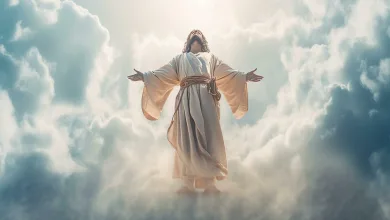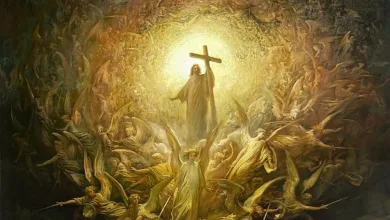How Is the Local Church to Be Governed and Led?
Even though the Bible does address the issue of leadership in the local church, there have been quite a variety of interpretations and applications of these texts down through the centuries.

Local Church Government
Historically, there have been three ways of structuring the government of the local church. The main distinction is where authority is vested.
First, episcopal church government is practiced, for example, in the Roman Catholic Church, Episcopalian churches, and Methodist churches. The name comes from the Greek word episkopos, which means “overseer.” In older translations, such as the King James Version, it was rendered as bishop. These churches and denominations have a hierarchical structure with authority being vested in a bishop, who oversees many local churches in a certain area or diocese.
An argument for this governance form, whose history goes back to the second century, is that it duplicates what the apostles did in the first century in terms of overseeing and pastoring groups of churches in an area. An argument against it may be that episkopos, as used in the New Testament, is a synonym for a local church elder, not an official with authority over many churches.
Second, congregational church government is practiced, for example, by Congregational and Baptist churches. This approach is very democratic; authority is vested in every local church member in that each has a vote regarding church issues and offices. Another normally associated concept is that of local church autonomy, the belief that nothing outside the church (e.g., a bishop or denominational officials) has authority over any local church.
The biblical argument for this approach is the priesthood of all believers (1 Peter 2:5), thus all believers ought to have a say in church matters, and New Testament texts that show all people associated with a church involved in some issue or activity (e.g., Acts 6:1–6; 15:22; 2 Corinthians 2:6–7). A challenge is that while these texts may demonstrate involvement of all church members, they do not necessarily support authority in all members.
Third, presbyterian church government is practiced, for example, by Presbyterian and Reformed churches. The term comes from the Greek word presbuteros, which means “elder.” Authority is vested in elders, individuals who are selected from within the local church. This is sometimes called federal church government, since the elders have the role of representing all the members. Biblical support is found in the many New Testament references to elders (e.g., Acts 11:30; 20:17; 1 Timothy 5:17; Titus 1:5; Hebrews 13:17; 1 Peter 5:1–2).

Local Church Offices
The New Testament discusses only two local church offices to which individuals are appointed: elder and deacon.
As noted above, there are many references to elders (presbuteros) in the local church, and this clearly is its highest level of human authority under Jesus Christ, who is head of the church. The term episkopos is also applied to those who hold this office since they are responsible to “oversee” the church (Acts 20:28; Philippians 1:1; 1 Timothy 3:1–2; Titus 1:7).
A third term applied to this office is the verb poimainō, which means “to shepherd” (Acts 20:28; 1 Peter 5:2), and the noun poimēn (Ephesians 4:11), which refers to a shepherd and is often translated pastor. This too illustrates a key responsibility of elders—to shepherd the flock of Christ. The main point here is that these are different terms that refer to one office, not three.
Unfortunately, through the centuries, three offices have often been derived from these terms. Overseers or bishops have been understood to be in authority over groups of churches. Pastors have been understood to be paid church leaders formally educated in the Bible and pastoral ministry. And elders have been understood as local church lay-leaders who have vocations other than ministry but also hold an office of leadership in the church. But the New Testament does not make these distinctions. The three terms are three ways of referring to those who hold one office: elder = overseer = pastor.
It is noteworthy that the New Testament always refers to elders in the plural. This seems to assume this office is to be held by multiple individuals, not just one. That makes sense in that it guards against abuse of power invested in one person and balances the strengths and weaknesses of multiple leaders for the welfare of the church. These multiple elders are equal in authority but may have different responsibilities (as 1 Timothy 5:17 demonstrates).
Those who hold this office are to be qualified according to lists of traits Paul gives in 1 Timothy 3:1–7 and Titus 1:5–9. The emphasis is on character, not skills. Two skills are listed: teaching and ability to manage one’s household; both are absolutely necessary for church leaders. What is stressed, though, is not one’s ability, but one’s character—local church elders need to be godly, Christlike, spiritually mature.
Basically, the functions of elders are to provide general leadership in the church, to teach biblical truth verbally as well as through lifestyle (Hebrews 13:7), to protect the church from doctrinal error and false teaching (Acts 20:28ff), and to make sure the church’s general needs are met (Acts 20:28; 1 Peter 5:2).
The only other New Testament local church office is deacon. The term comes from the Greek word diakonos, which means “servant” or “minister.” The word’s only occurrences in the technical sense of those who hold this office are in Philippians 1:1 and 1 Timothy 3:8–13. The office’s origin seems to be seen in Acts 6:1–6, where the Jerusalem church’s elders/pastors appointed a number of men to oversee a particular task (equitable distribution of food) so that the elders themselves could keep their priorities of “prayer and the ministry of the word” (v. 4).
If this is the prototype of the deacon’s office, then the deacon’s function seems to be with regard to the church’s material and physical needs in order to assist and support the elders by allowing them to keep their highest priorities—meeting its spiritual needs.
Recently a hot topic among Christians has been whether women can hold these local church offices, specifically that of elder. Those who would say no to this are called complementarians, because they believe that even though God created men and women equal in essence, he also gave them distinct and different roles and responsibilities, and these complement one another.
One of their main texts is 1 Timothy 2:12: “I do not permit a woman to teach or to have authority over a man.” Those who would say yes are called egalitarians, because they believe men and women are equal in essence as well as authority. One of their main texts is Galatians 3:28: “There is neither Jew nor Gentile, neither slave nor free, nor is there male nor female, for you are all one in Christ Jesus.”
INTERESTING FACT
It seems that in the first century, whereas the office of elder was mandatory for local churches, the office of deacon was not. It could be used if the priorities of the elders were threatened by material needs. However, in the twenty-first century, it seems that the office of deacon is essential due to material matters, such as church buildings and properties, financial record-keeping for nonprofit organizations, etc. Now many issues threaten the spiritual priorities of pastors and elders, and these priorities must be protected.

Aaron, D. (2012) Understanding Theology in 15 Minutes a Day. Minneapolis, MN: Bethany House Publishers, pp. 177–181.



